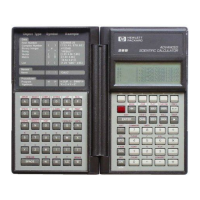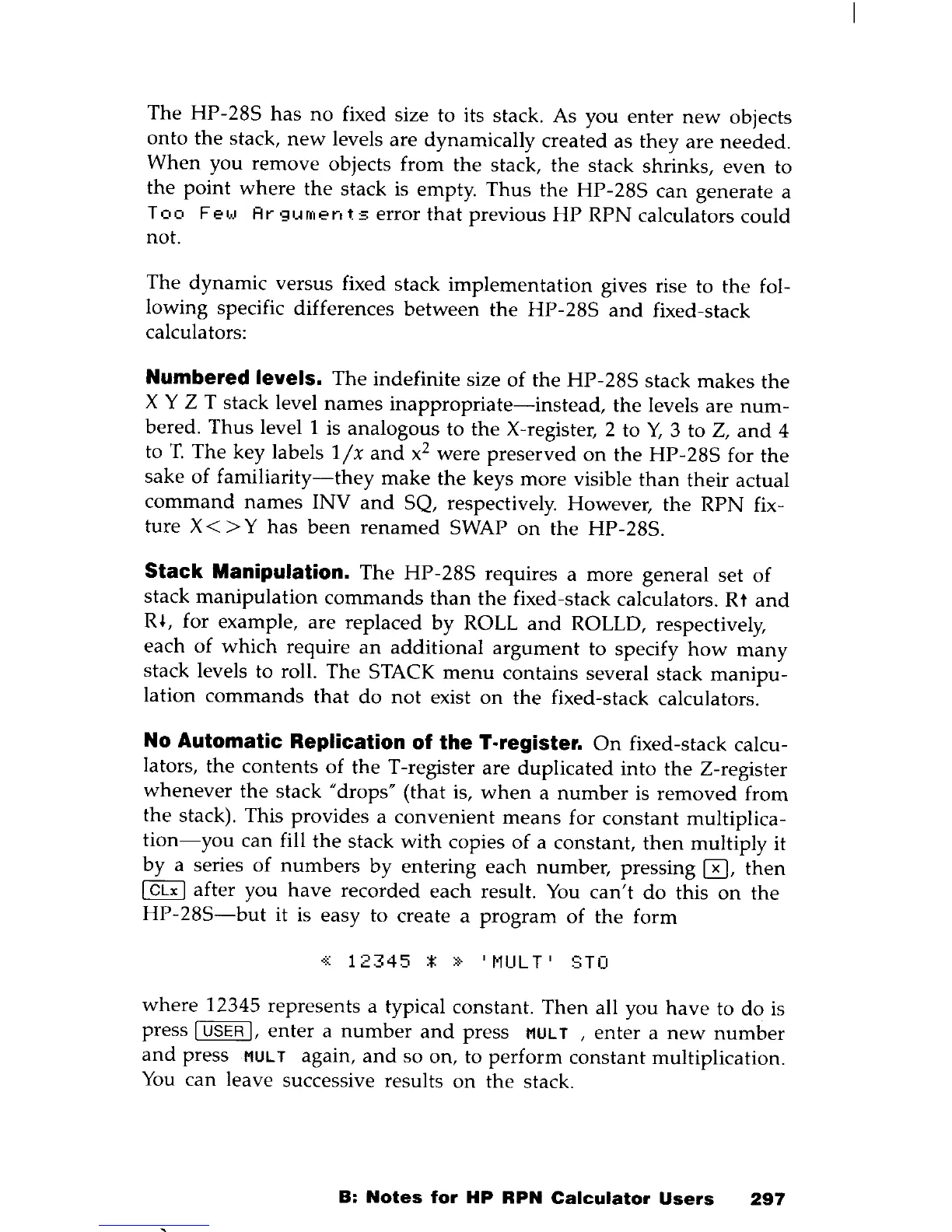The
HP-28S
has
no
fixed size to its stack. As you
enter
new
objects
onto
the
stack,
new
levels
are
dynamically created as
they
are
needed.
When
you
remove
objects from
the
stack,
the
stack shrinks,
even
to
the
point
where
the
stack is empty.
Thus
the
HP-28S
can
generate a
Too
Fe~!
A
....
gurnen
t s error
that
previous
HP
RPN
calculators
could
not.
The
dynamic
versus fixed stack
implementation
gives rise to
the
fol-
lowing specific differences
between
the
HP-28S
and
fixed-stack
calculators:
Numbered levels.
The
indefinite size
of
the
HP-28S
stack
makes
the
X Y Z T stack level
names
inappropriate-instead,
the
levels
are
num-
bered.
Thus
level 1 is
analogous
to
the
X-register, 2 to
Y,
3 to Z,
and
4
to
T.
The
key labels
1jx
and
x
2
were
preserved
on
the
HP-28S
for
the
sake
of
familiarity-they
make
the
keys
more
visible
than
their actual
command
names
INV
and
SQ, respectively. However,
the
RPN
fix-
ture X
< > Y
has
been
renamed
SWAP
on
the
HP-28S.
Stack Manipulation.
The
HP-28S
requires a
more
general set
of
stack
manipulation
commands
than
the
fixed-stack calculators.
Rt
and
R~,
for example, are replaced
by
ROLL
and
ROLLO, respectively,
each
of
which
require
an
additional
argument
to specify
how
many
stack levels to roll. The STACK
menu
contains several stack
manipu-
lation
commands
that
do
not
exist
on
the
fixed-stack calculators.
No Automatic Replication of
the
T·register.
On
fixed-stack calcu-
lators,
the
contents
of
the
T -register are
duplicated
into
the
Z-register
whenever
the
stack "drops"
(that
is,
when
a
number
is
removed
from
the
stack). This provides a
convenient
means
for
constant
multiplica-
tion-you
can fill
the
stack
with
copies
of
a constant,
then
multiply it
by
a series
of
numbers
by
entering
each
number, pressing
0,
then
1 CLx 1 after you
have
recorded
each
result.
You
can't
do
this
on
the
HP-28S-but
it is easy to create a
program
of
the
form
«
12345
* » 'MULT' STO
where
12345 represents a typical constant.
Then
all you
have
to
do
is
press
1
USER
I,
enter
a
number
and
press
MUL
T ,
enter
a
new
number
and
press
MUL
T again,
and
so on, to
perform
constant
multiplication.
You
can leave successive results
on
the
stack.
B:
Notes
for
HP
RPN
Calculator
Users
297

